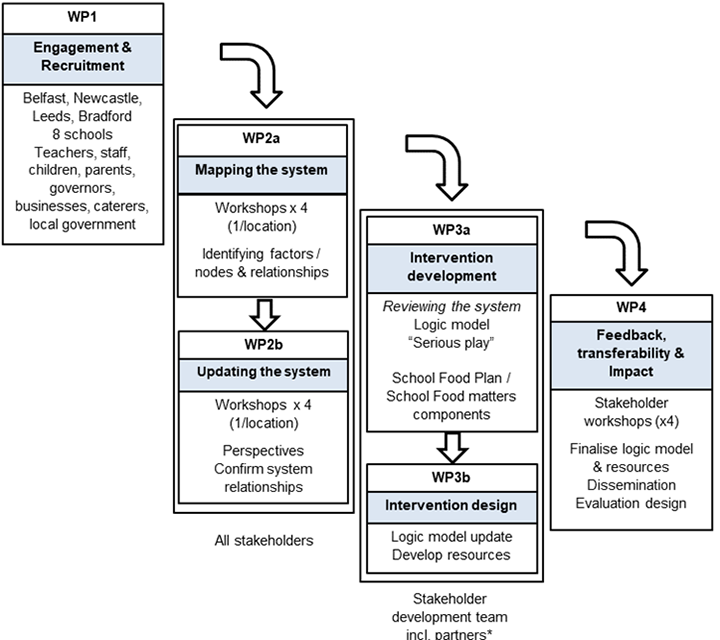About the Research

Children consume a third of their food at school, providing an opportunity to promote healthy diets and reduce levels of obesity. International and national organisations recommend that schools adopt approaches across the whole school day to support children to make healthy food choices, offering consistency in the quality of foods provided, eating culture, food education, and use of food to learn. In reality, uptake is poor, partly due to lack of direction on how to use such an approach, but also because schools are highly complex environments with multiple competing demands, and influences from wider factors like national policy, cultural beliefs, population characteristics, and funding.
Aims and objectives

We aim to design a practical intervention to help primary schools deliver existing policies which promote whole school approaches to food. This will be done by (1) partnering with key people (stakeholders) including head teachers, teachers, staff, children, parents, school governors, and government representatives; (2) hosting workshops with stakeholders to get a rich picture of all of the factors that influence food choice in the school day; (3) developing the intervention alongside stakeholders; and (4) exploring whether our intervention can be feasibly used by schools across the UK.
Plan
Stage 1: We will host stakeholder workshops in Bradford, Leeds, Newcastle and Belfast to discuss factors influencing what children eat during the school day such as the physical environment, culture and government policies. We will encourage discussion on how these factors relate to each other and use this information to build a picture called a 'systems map', providing a rich understanding of local and wider influences on children's food choice in relation to existing policies/standards.
Stage 2: We will invite a smaller stakeholder group to help design the intervention through a series of workshops. This will consider factors identified in our system maps. Potential burden, acceptability and barriers will be considered. Importantly, we will focus on developing an intervention that has the best chance of adapting to adversity and supporting those in greatest need.
Stage 3: We will share the draft intervention with our wider stakeholder group and seek feedback; asking them to rate its acceptability and ease of use. A form will also be used for stakeholders to consider which parts of the intervention they feel can be applied across all schools and which may be less transferable. We will then make improvements before fully developing the intervention and its resources.

